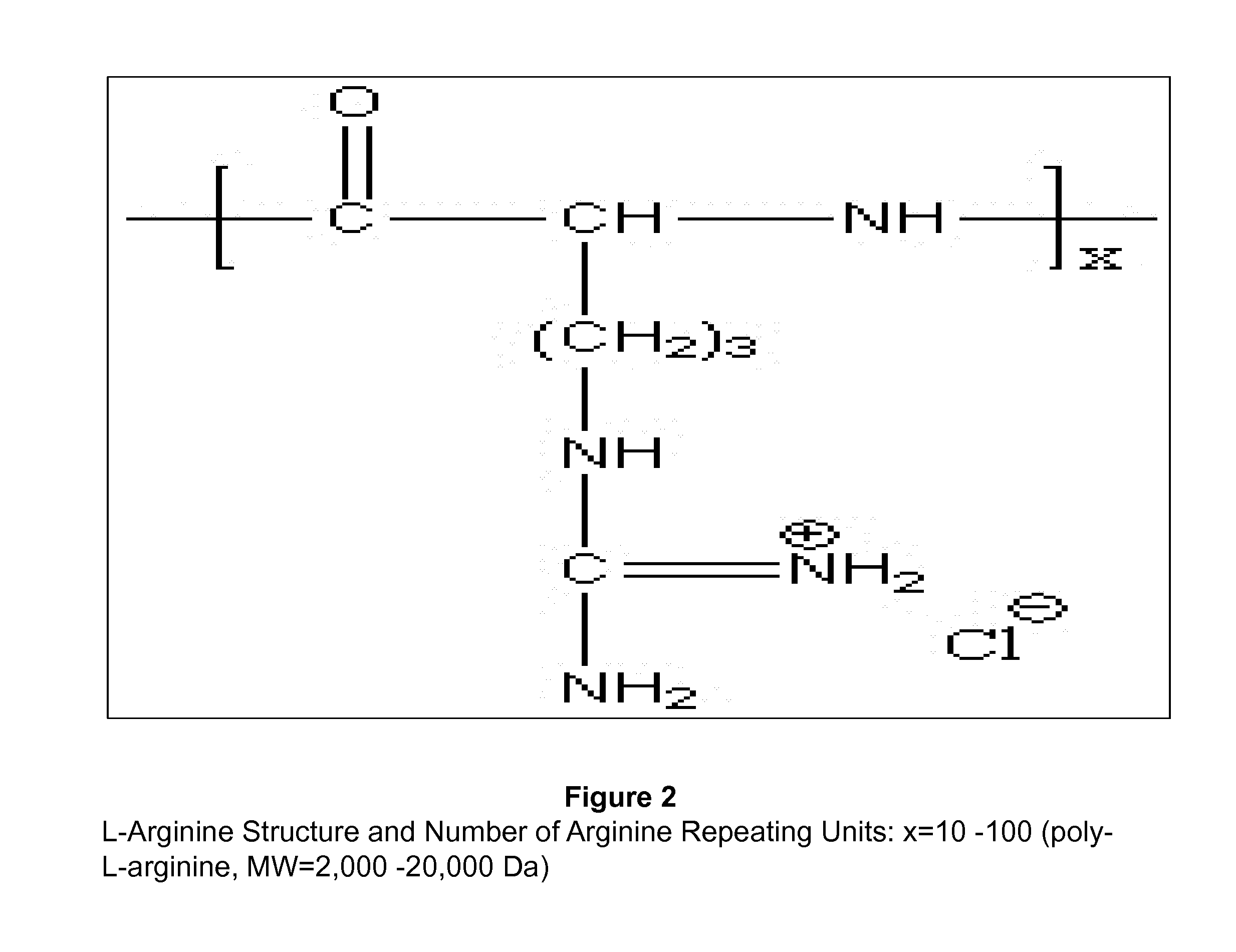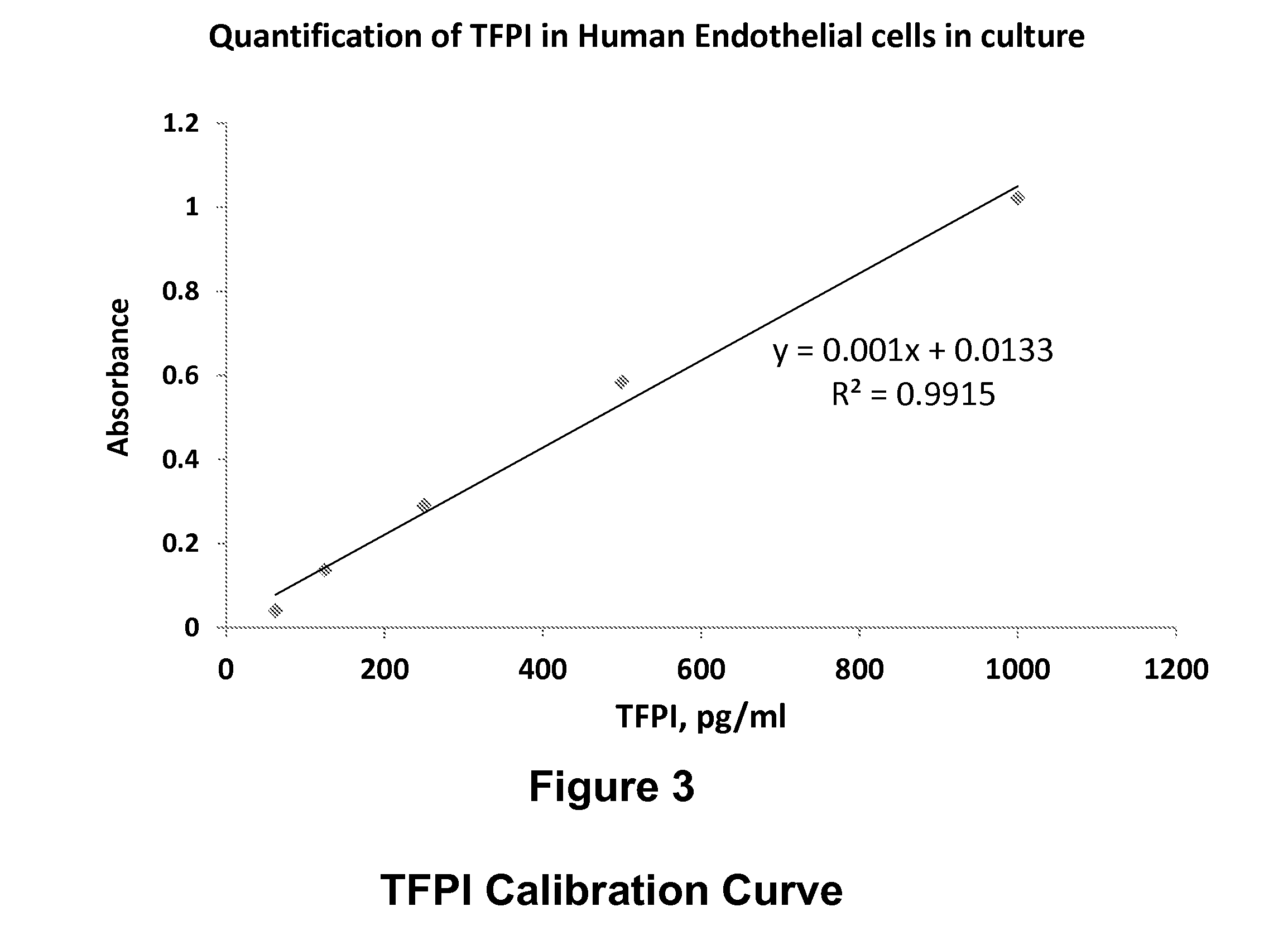Method and composition of glycosaminoglycans in sickle cell and vascular disorders
a glycosaminoglycan and sickle cell technology, applied in the direction of macromolecular non-active ingredients, capsule delivery, nanocapsules, etc., can solve the problems of cerebrovascular accidents, aplastic crises, cerebrovascular accidents, and high pain rates of vasoocclusive crises, and achieve the effects of reducing the risk of aplastic crises, and reducing the risk of aplastic cris
- Summary
- Abstract
- Description
- Claims
- Application Information
AI Technical Summary
Benefits of technology
Problems solved by technology
Method used
Image
Examples
example 1
(a) Preparation of Sulfated Non-Anticoagulant LMWH (SNACH)
[0100]Preparation of non-anticoagulant LMW heparin (NACH): Heparin was fragmented by periodate oxidation based on a procedure from Islam et al., (Carbohydrate Research 337 (2002) 2239-2243). Briefly, heparin, sodium salt (20 g, 1.43 mmol) was dissolved in 175 mL of distilled water. The pH was adjusted to 5.0 using 1 M HCl. NaIO4 (15 g, 0.07 mol), dissolved in 500 ml, water, was added in a single portion with stirring. The pH was readjusted to 5.0 using 1 M HCl and left for 24 h at 4° C. in the dark. The solution was dialyzed against 4 volumes of water (with one change of water) for 15 h at 4° C. To the approximately 1.5 L of solution obtained after dialysis, 32 mL of 10 M NaOH was added. The solution was stirred at room temperature for 3 h. To prevent the development of colored products, this step was done in the dark. NaBH4 (1 g, 0.026 mol) was added in one portion, and the approximately 1.5 L of solution was stirred for 4 h...
example 2
Synthesis of Chitosan (CS) Poly L-Arginine (PLAR) Conjugate (CS-PLAR)
[0103]The Chitosan poly L-arginine (CS-PLAR) conjugates are synthesized where the conjugation is achieved by amide bond linkage between the amine group (—NH2) of CS and the carboxyl group (—COOH) of PLAR (FIG. 1). Briefly, for conjugation of CS and PLAR, 5 ml of CS solution (1 mg / ml) is mixed with 5 ml of PLAR (1 mg / ml) and then added to 800 mg of 1-ethyl-3-(3-dimethylaminopropyl) carbodiimide hydrochloride (EDC) and 1 gram of N-hydroxysulfosuccinimide (Sulfo-NHS). After 24 hours, the resulting CS-PLAR conjugates are separated by membrane-filter. Further dialysis will be performed for purification. The final solution is lyophilized for further studies. The number of L-arginine used ranged from 10-100 repeated units (FIG. 2).
example 3
Synthesis of Chitosan-Poly L-Arginine Nanoparticles (CS-PLAR-NPs)
[0104]A Chitosan-Poly L-arginine nanoparticle (CS-PLAR-NPs) is synthesized in mild acidic conditions by promoting the interaction of the NH3 group present in chitosan with the phosphate group present in tripolyphosphate (TPP). Briefly, to 10 ml of a solution 1% CS-PAR conjugate, 1 ml of a triphosphate disodium salt (1 mg / ml in deionized water) is added drop by drop, with constant stirring. The entire solution is then sonicated for about 30 seconds using a probe sonicator, and allowed to stir for another 4 hours. This solution is lyophilized to get the nanoformulation in powdered form. The lyophilized powder will be re-dispersed in phosphate buffered for further use.
PUM
| Property | Measurement | Unit |
|---|---|---|
| volumes | aaaaa | aaaaa |
| volumes | aaaaa | aaaaa |
| pH | aaaaa | aaaaa |
Abstract
Description
Claims
Application Information
 Login to View More
Login to View More - R&D
- Intellectual Property
- Life Sciences
- Materials
- Tech Scout
- Unparalleled Data Quality
- Higher Quality Content
- 60% Fewer Hallucinations
Browse by: Latest US Patents, China's latest patents, Technical Efficacy Thesaurus, Application Domain, Technology Topic, Popular Technical Reports.
© 2025 PatSnap. All rights reserved.Legal|Privacy policy|Modern Slavery Act Transparency Statement|Sitemap|About US| Contact US: help@patsnap.com



